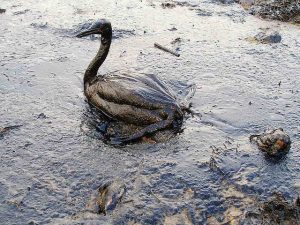
Deepwater Horizon oil spill, Gulf of Mexico. Microbes eat up the oil using aerobic digestion, or breaking it down with oxygen. There is another approach to breaking down unwanted materials which can be more efficient. It’s called anaerobic, or without oil – in a sealed environment.
Anaerobic digestion is the action of bacteria breaking down organic matter without oxygen. Biogas, mainly made up of methane, is formed as bacteria acts upon the organic matter such as manure. Elements that do not contain methane are removed for methane to be utilised as a source of energy.
There are certain types of organic matter that is more difficult to break down than others. Organic matter that easily breaks down produces more biogas than that which is difficult to digest.
Codigestion happens when you use anaerobic digestion to break down many kinds of organic matter in a single anaerobic digester. The following are among organic wastes that MBP Solutions uses with manure in codigestion:
- Used fats, oil and grease
- Restaurant food waste
- Energy crops
- Food processing wastes
- Food processing by-products
- Crop remains
Codigestion boosts the production of biogas from organic waste that is difficult to break down.
Collecting Organic Waste
Organic waste must be collected in a system that ensures all debris is removed. It is likely to contain particles such as stones, straw or sand. These particles can stop up the digester’s pipes and interfere with operation.
Production of biogas is possible in farms that collect manure in the following forms:
- Liquid
- Slurry
- Semi-solid
In addition, the manure should be collected:
- At a central point such as a pit, pond or tank
- Every day or every few days
- Every day or every other day
Elements that could be injurious to the anaerobic bacteria action are not added. Such elements include the following:
- Feed additives that contain antibiotics
- Compounds used for cleaning and maintaining equipment
Cleaning compounds may contain harmful ingredients such as halogens, acids as well as detergents.
The use of these materials has not been declared problematic. Nevertheless, maximum quantities have not been established. Therefore, one must be careful not to use them in large quantities in the organic waste.
Handling Manure
If you have a large farm, then you have a large amount of manure on a daily basis. Most times you struggle to dispose of it. Creating biogas gives a solution even as it provides you with your own source of power.
Manure is treated before it is fed into a digester for the adjustment of the total solid components. This usually includes adding separating solids, water followed by mixing or heating.
Designs of Anaerobic Digesters
Plug Flow
Plug flow systems are best suited for dairy operations. These ones collect manure by scraping. The preferred ones are mixed plug flow systems because they are built to support a wider range of solid concentrations.
Covered Lagoon
The methane is recovered and then fed via a pipe to the combustion device from a lagoon that contains an adjustable cover. Some systems utilize a single cell for both digestion and storage.
Complete Mix
These digesters are created with a tank that is enclosed and heated with a mechanical hydraulic /gas-mixing system. They can also be used in dairy operations. This is because they work best with considerable dilution in the manure such as the wastewater from a milking centre.
Additional Designs
Other typical designs include:
Batch Digester: in this one, manure is introduced into the reactor at the start of the process in a batch. The reactor stays closed for the length of the process.
Induced Blanket Reactors: A blanket of sludge develops retaining the anaerobic bacteria. This creates an environment that is rich in bacteria. The feedstock must pass through this environment.
Fixed film digesters: These ones come with plastic media such as pellets. Bactria attaches to the media and grows. They do not rely only on suspended bacteria in order to break down the digester feedstock.
Conclusion
Anaerobic digestion ensures the formation of biogas which forms as bacteria works on the organic matter. This then gives you an alternative source of clean energy as well as fuel.



